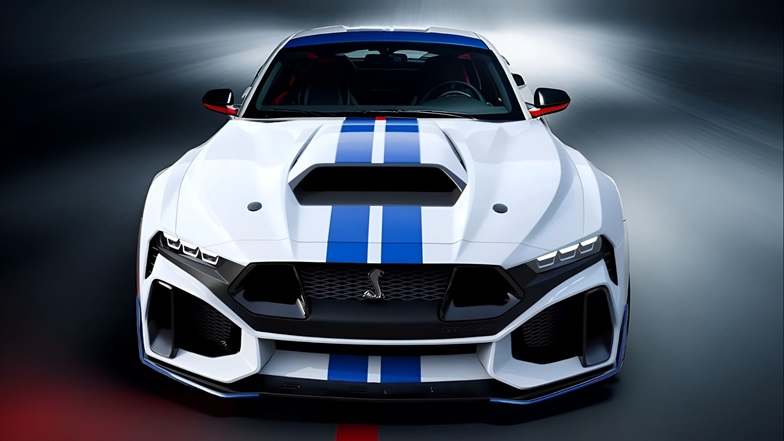The electric pickup truck market is about to welcome a new contender: Kia’s much-anticipated electric Tasman. After years of teasing and speculation, Kia has officially confirmed the EV version of its Tasman pickup is on the horizon. Here’s a closer look at what we can expect from this exciting new entry and how it compares to its competitors.

The Evolution of the Kia Tasman
Kia first unveiled the Tasman pickup truck in October, but it debuted with a 2.2-liter diesel engine—leaving many enthusiasts hoping for an electric model disappointed. However, hints of an EV version were always present. During Kia’s 2022 CEO Investor Day, the automaker announced plans to launch two electric pickups: one targeting emerging markets and another as a dedicated EV model.
Fast forward to now, Kia’s head of marketing for South Africa, Christo Valentyn, has officially confirmed that an electric version of the Tasman is indeed in development. Valentyn let the news slip during a recent media event, saying, “I’m probably not supposed to say this, but… an electric one is coming.”
A Competitive Design and Build
At 5,410 mm long, 1,930 mm wide, and 1,870 mm tall, the Tasman is slightly smaller than its rival, the Ford F-150 Lightning (5,885 mm long, 2,029 mm wide, and 1,961 mm tall). Its size positions it as a direct competitor to popular midsize pickups like the Toyota Tacoma and Hilux.
While the diesel version’s design leans heavily on traditional pickup aesthetics, the EV model could introduce a modern, futuristic vibe akin to Kia’s three-row EV9 SUV, as seen in recent spy shots. The Tasman’s flexible modular platform allows Kia to adapt its design to different powertrains seamlessly.
Will the Electric Tasman Come to the US?
One of the big questions surrounding the electric Tasman is whether it will make its way to the United States. While Kia has not officially announced US availability, there are compelling reasons to believe it will.
- Growing EV Pickup Market: The US is home to a booming electric pickup market, with models like the Ford F-150 Lightning, Tesla Cybertruck, Rivian R1T, and Chevrolet Silverado EV leading the charge. Kia’s electric Tasman could tap into this growing demand.
- Local Production: Kia’s parent company, Hyundai Motor Group, recently began operations at its massive new manufacturing plant in Georgia. Kia is already building its EV9 SUV at this facility, making it logical to produce the electric Tasman there as well. Valentyn’s statement about needing to “respect the segment leaders” suggests that competing in the US market would require local production to remain cost-competitive and appeal to American buyers.
- America’s Love for Pickups: With pickups dominating the US automotive landscape, an electric Tasman tailored to American preferences could make a significant impact.

A Global Rollout Strategy
Kia plans to launch the Tasman in Korea in the first half of 2025, followed by markets in Australia, Africa, the Middle East, and Saudi Arabia. In some regions, such as Australia, a plug-in hybrid version is also expected to be available. This strategic rollout reflects Kia’s intent to cater to varying market demands while positioning the Tasman as a versatile global contender.
The Electric Tasman vs. the Competition
The electric pickup segment is becoming increasingly crowded, with heavyweights like Ford, Tesla, and Rivian setting the benchmark. Here’s how the Tasman is expected to stack up:
| Feature | Kia Tasman EV | Ford F-150 Lightning | Tesla Cybertruck | Rivian R1T |
|---|---|---|---|---|
| Length | 5,410 mm | 5,885 mm | Approx. 5,890 mm | 5,504 mm |
| Width | 1,930 mm | 2,029 mm | Approx. 2,027 mm | 2,015 mm |
| Height | 1,870 mm | 1,961 mm | Approx. 1,900 mm | 1,920 mm |
| Expected Range | TBA (Likely 300+ miles) | 240–320 miles | 250–500+ miles | 314 miles |
| Base Price | Estimated $45,000–$55,000 | $49,995 | $49,900 | $73,000 |
| Key Selling Point | Versatility and global appeal | Proven reliability | Futuristic design and tech | Adventure-ready capabilities |
The Tasman’s competitive pricing and adaptable design could make it an attractive option, particularly for buyers looking for a balance between capability and affordability.

Why the Electric Tasman Matters
Kia’s entry into the electric pickup market is significant for several reasons:
- Broader Consumer Options: As the EV market continues to expand, more choices mean better options for consumers. The Tasman fills a gap for those seeking a midsize, affordable electric truck.
- Global Electrification Goals: Kia’s move aligns with its broader strategy to electrify its lineup and reduce carbon emissions. The electric Tasman will play a crucial role in achieving these objectives.
- Competitor Pressure: By entering the EV truck segment, Kia puts pressure on established players like Ford and Toyota, potentially driving innovation and cost reductions across the industry.
The confirmation of an electric Tasman marks a pivotal moment for Kia. While the diesel version has already made its debut, the EV model represents a significant leap forward in technology and sustainability. With plans to compete globally and potentially enter the US market, the Tasman is poised to shake up the midsize pickup segment.
Whether it’s taking on the Ford F-150 Lightning in America, the Toyota Hilux in Australia, or the Tesla Cybertruck worldwide, the electric Tasman is a clear statement of Kia’s ambitions in the electric vehicle space.
The electric Kia Tasman isn’t just another pickup—it’s a symbol of the industry’s shift toward sustainable and versatile vehicles. While we await more details on its specs and performance, the Tasman’s confirmation alone is enough to stir excitement among EV enthusiasts and pickup truck fans alike.
As Kia gears up for the Tasman’s official launch, one thing is certain: the electric pickup revolution is here, and the Tasman is ready to carve out its place in it. Keep an eye out for updates as Kia reveals more about this game-changing vehicle.
PEOPLE WHO READ THIS, ALSO READ




